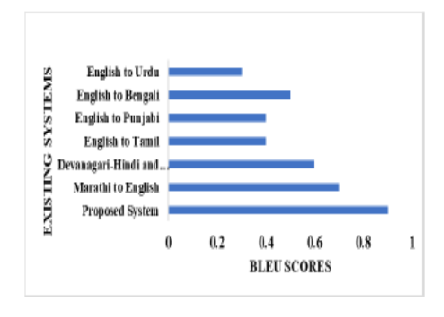


Indian Journal of Science and Technology
Year: 2023, Volume: 16, Issue: 18, Pages: 1357-1364
Original Article
A Shalini Divya Prasanna1*, C Beulah Christalin Latha2
1Research Scholar, Department of Digital Sciences, Karunya Institute of Technology and Sciences, Coimbatore, 641114, Tamil Nadu, India
2Associate Professor, Department of Digital Sciences, Karunya Institute of Technology and Sciences,, Coimbatore, 641114, Tamil Nadu, India
*Corresponding Author
Email: [email protected]
Received Date:23 January 2023, Accepted Date:01 April 2023, Published Date:08 May 2023
Objectives: To develop an appropriate machine translation model for translating text from English to Tamil. Methods: The proposed work uses a Gated Recurrent Unit (GRU) Long Short-Term Memory (LSTM) model. The Repeat Vector function is used for fitting both the decoder and encoder parts of the network model. Adam optimizer is used because of its faster execution and less consumption of memory. It mainly uses the text corpora which are available in the Internet repository namely Technology Development for Indian Languages (TDIL), Linguistic Data Consortium for Indian Languages (LDCIL), Kaggle, and Ishikahooda. Findings: The motivation for the proposed work emerged from identifying the regional language Tamil as one of the less frequently used languages in the existing translation systems. The Tamil Character Set is one of the challenging factors for the existence of fewer such translation systems. The proposed system produces a BLEU score of 0.9, a Meteor score of 0.98, a TER score of 0.5, a WER score of 20%, an Accuracy rate of 5 (in a 5-point grading scale), and an Adequacy rate of 5 (on a 5-point grading scale) which are significantly better than the existing systems. Novelty: The space complexity of the proposed LSTM-based English Tamil Translator is fine-tuned to 256 units of memory using Adam optimizer for achieving less storage consumption. The number of layers is optimized for reducing the execution time. Unicode Transformation Format (UTF-8) encoding is used to incorporate Tamil language characters. This work has been implemented with a wide range of sentences counted to several thousand. LSTM-based English Tamil Translator is helpful for bilingual learners who are learning specifically Tamil language.
Keywords: Machine translation; Deep Learning; LSTM; English; Tamil
© 2023 Prasanna & Latha. This is an open-access article distributed under the terms of the Creative Commons Attribution License, which permits unrestricted use, distribution, and reproduction in any medium, provided the original author and source are credited. Published By Indian Society for Education and Environment (iSee)
Subscribe now for latest articles and news.